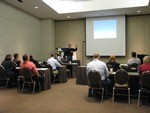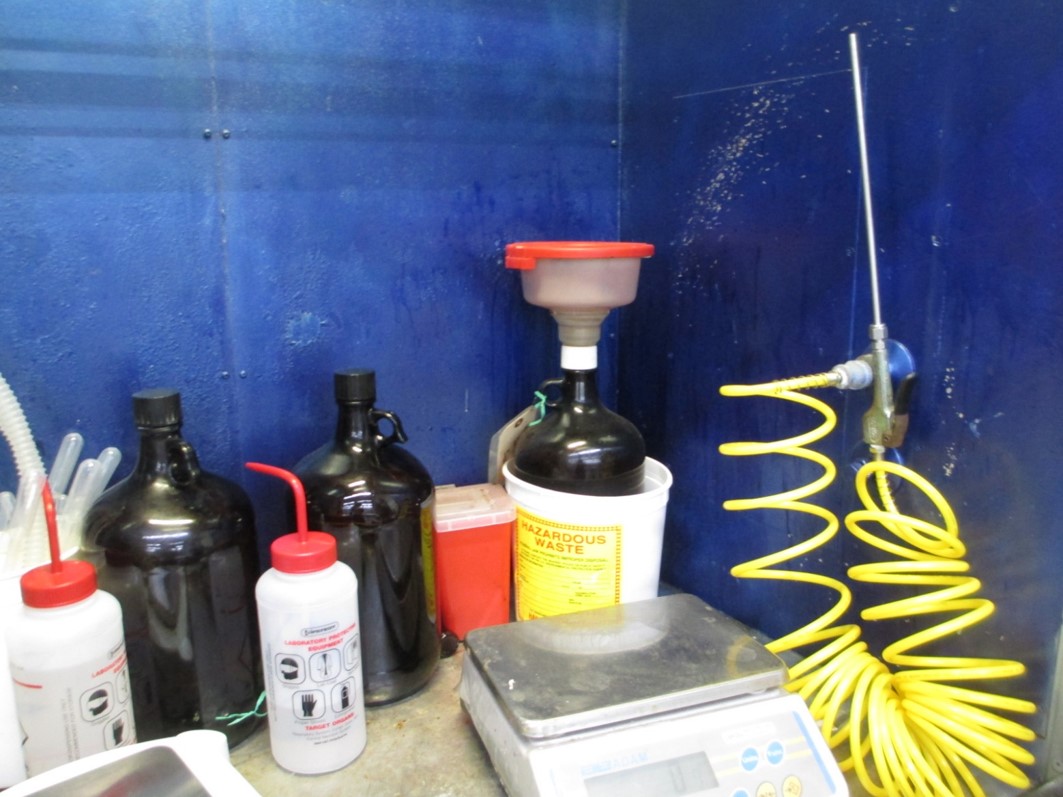Generators of hazardous waste may accumulate acute hazardous waste and/or non-acute hazardous waste in containers in a satellite accumulation area (SAA). Prior to the Generator Improvements Rule USEPA used separate volume thresholds for these two wastes: one quart or fifty-five gallons, respectively. When the volume threshold is exceeded, the generator must take certain actions within a certain time-frame to continue in compliance with the SAA regulations of 40 CFR 262.15. Revisions of the Generator Improvements Rule added a weight threshold for acute hazardous waste accumulated in a SAA.
The purpose of this article is to explain the regulations at 40 CFR 262.15(a) that provide a maximum weight for the accumulation of acute hazardous waste in a SAA.
Before we begin…
- This is one article in a series that reviews all of the changes made to §262.15 by the Generator Improvements Rule.
- The location of these regulations within Title 40 of the Code of Federal Regulations (CFR) was changed by the Generator Improvements Rule. The satellite accumulation area regulations were located at 40 CFR 262.34(c), they are now found at 40 CFR 262.15.
- When the SAA regulations were initially codified, 1 quart was chosen as the threshold volume for acute hazardous waste in a SAA because it is the volumetric equivalent of 1 kilogram of acute hazardous waste used elsewhere in the regulations. Specifically, in the definitions of generator category (LQG, SQG, or VSQG) at §260.10.
- When the SAA regulations were finalized in 1984, commentators opposed using a weight measure. Times have changed. Stakeholders have since requested a weight measure be added to account for solid acute hazardous waste.
- USEPA proposed to add a similar weight equivalent to the 55-gallon threshold for non-acute hazardous waste. Commenters indicated the existing volumetric accumulation limit of 55 gallons for SAAs is sufficient. USEPA will not be adding a weight measure for non-acute hazardous waste in a SAA.
- FAQ: What is a satellite accumulation area?
- FAQ: What is a central accumulation area?
Scope and Applicability:
- Accumulation of hazardous waste in a SAA is an option for both a large quantity generator of hazardous waste (LQG) and a small quantity generator of hazardous waste (SQG). Very small quantity generators of hazardous waste (VSQG) don’t have to comply with SAA regulations per §262.14(a).
Not sure of your hazardous waste generator category? |
- These new regulations were created by the Generator Improvements Rule, which may not yet be adopted by your state. FAQ: What is the status of the Generator Improvements Rule in my state?
- A generator may accumulate either or both of the following in a SAA:
- Acute hazardous waste
- Non-acute hazardous waste (aka: hazardous waste).
40 CFR 262.15(a):
(a) A generator may accumulate as much as 55 gallons of non-acute hazardous waste and/or either one quart of liquid acute hazardous waste listed in §261.31 or §261.33(e) of this chapter or 1 kg (2.2 lbs) of solid acute hazardous waste listed in §261.31 or §261.33(e) of this chapter in containers at or near any point of generation where wastes initially accumulate which is under the control of the operator of the process generating the waste, without a permit or interim status and without complying with the requirements of parts 124, 264 through 267, and 270 of this chapter, provided that all of the conditions for exemption in this section are met. A generator may comply with the conditions for exemption in this section instead of complying with the conditions for exemption in §262.16(b) or §262.17(a), except as required in §262.15(a)(7) and (8). The conditions for exemption for satellite accumulation are:
Like this article? Subscribe to my Monthly Newsletter No marketing emails! |
What’s it mean?
Under the revised regulations a generator may accumulate either or both of the following in a SAA without complying with the requirements of §262.15(a)(6):
- 55 gallons of a non-acute hazardous waste. This may be a liquid or a solid.
And/Or…
- 1 quart of a liquid acute hazardous waste.
- 1 kilogram (2.2 pounds) of a solid acute hazardous waste.
USEPA considered allowing the generator to determine which unit of measure (qt or kg) to use for its acute hazardous waste in a SAA as long as it identified the metric they chose. However, commenters suggested, and USEPA agreed, to require the generator to use the applicable unit of measure for their acute hazardous waste. Therefore, 1 quart is the unit of measure for a liquid acute hazardous waste and 1 kilogram (2.2 lb) is the unit of measure for a solid acute hazardous waste.
Note: The thresholds for acute hazardous wastes are not intended to be additive, so in cases where a generator has both liquid and solid acute hazardous waste accumulating in a SAA, the 1 kg (2.2 lb) limit will apply.
Q: Must I include the weight of the packaging, e.g., fully dispensed vials that once held P-listed pharmaceuticals, in determining the threshold mass or volume of an acute hazardous waste in a SAA?
A: No. The container does not need to be included when calculating the maximum accumulation volume or weight of acute hazardous waste in a SAA (RO 14875).
If you like this article, please share it using any of the social media platforms identified at the bottom of this article. |
Conclusion:

One benefit to accumulating hazardous waste in a SAA is that personnel who solely work with waste within the SAA are not subject to the personnel training requirements of §262.17(a)(7) for a LQG or §262.16(b)(9)(iii) for SQG. However, management of acute or non-acute hazardous waste outside of the SAA will require some form of hazardous waste personnel training. Contact me to determine your training needs.

